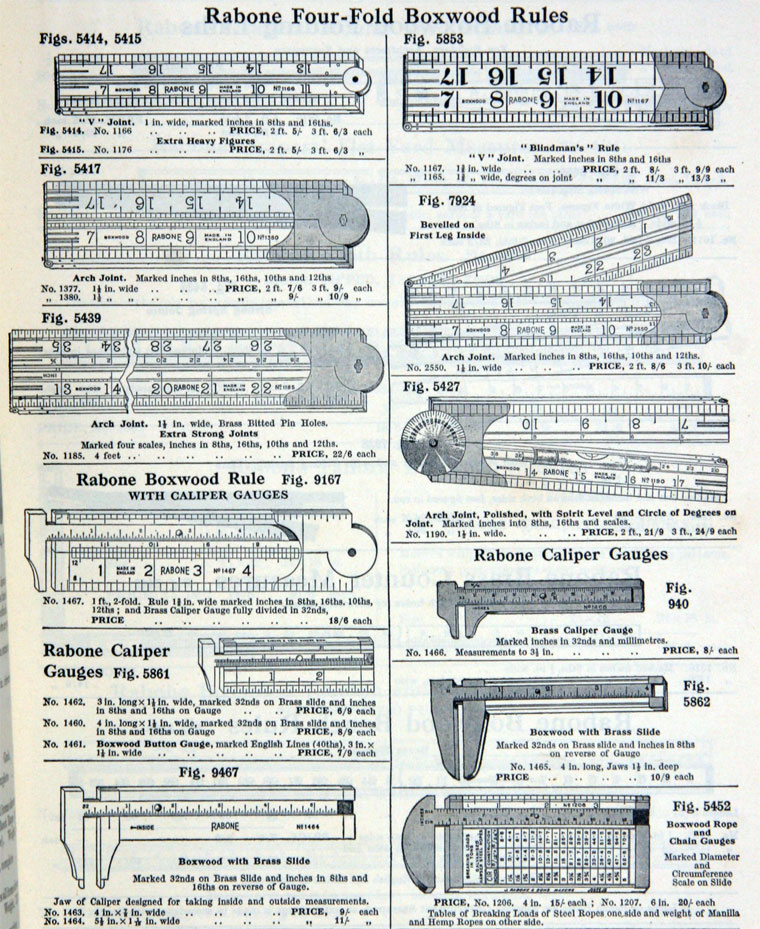Not wanting to disappoint Richard, or Nigel, this is all I can offer.
I agree that it's a model 1190 - the combination of a protractor and a spirit level is fairly distinctive. I can see from catalogues that the 1190 was offered in 2 and 3 foot versions.
The Rabone company was founded in 1784. In 1871 it moved from Birmingham to nearby Hockley Abbey. They used the Hockley Abbey name and a triple triangle trade mark from that time.
Richard, is your rule marked elsewhere as "Hockley Abbey"? If so, it's later than 1871. Also, they became Rabone & Sons in 1877, which may help.
They continued trading for a long time, dominating the market for boxwood rules. The next easy date for dating old tools is 1963 when they merged with Chesterman to form Rabone Chesterman - but it's obvious that your rule is older than that.
As the listings on the Worthpoint site show, this model exists with a plain semi-circle style of arch and also with a more elegant double curve. I don't know which is earlier and which later though it seems likely that yours would be later, since designs like this tended to be simplified rather than made more elaborate.
Looking for the 1190 in catalogues is a bit frustrating. There's an 187 catalogue scanned by Google but as far as I can see it's not in there.
I also have a pdf of Rabone's Catalogue no 30, which has it, but is not dated. I'd guess it was from the 1930s or 40s, from the style of the typography.
It's also in the 1925 Melhuish catalogue, priced 5s 6d each.
The 1938 Marples catalogue has a large section devoted to Rabone rules which by that time were being distributed by Marples. It's in there, at 68 s per dozen, with the same plainer style of arch as yours.
It's still there in 1959, but with the double curved arch.
So it's hard to be certain, but it looks like this model had quite a long time span when it was available, and wasn't one of the seriously rare models but a useful one worth including in general merchants' lists.
I don't really know which arch style was earlier but I do know that catalogues are not a foolproof guide - old picture blocks got re-used for decades if they were near enough to give the general appearance of a tool.
Looking at your photo closely, there are two dots on the protractor. Both should have fixing pins in. It looks like the upper one is missing and I wonder if the other is broken? That would let the disc twist round so, as you say, it's not in proper alignment.
Even with that damage, it's a nice thing to have. Do you have more photos, showing any maker's markings?
Edited to add: I see from Bourbon's link that it's still there in the 1964 Buck and Hickman catalogue, but now at the shocking price of 21s 9d.
And it was still there in the 1971-2 edition, in a much reduced range of boxwood rules - but now with a plain V-joint - and costing £1.83.











































